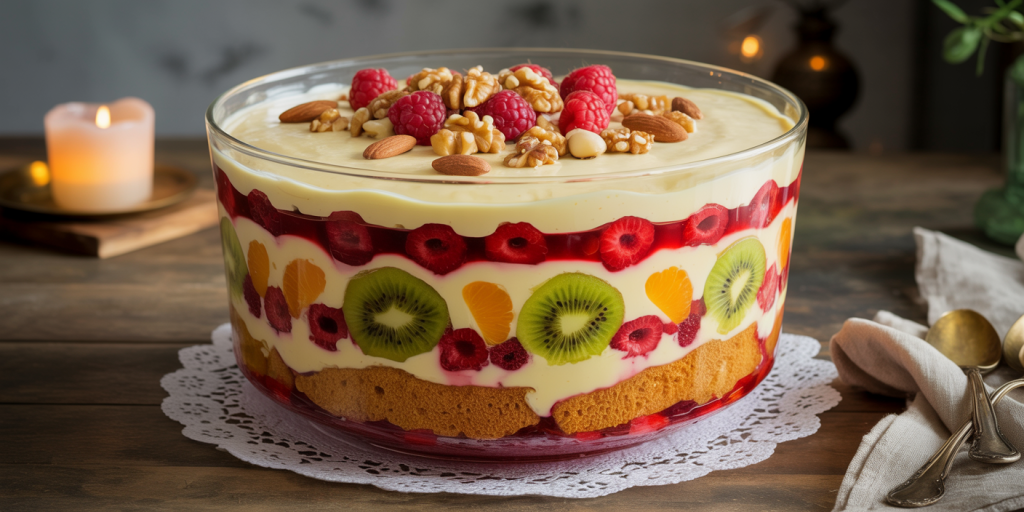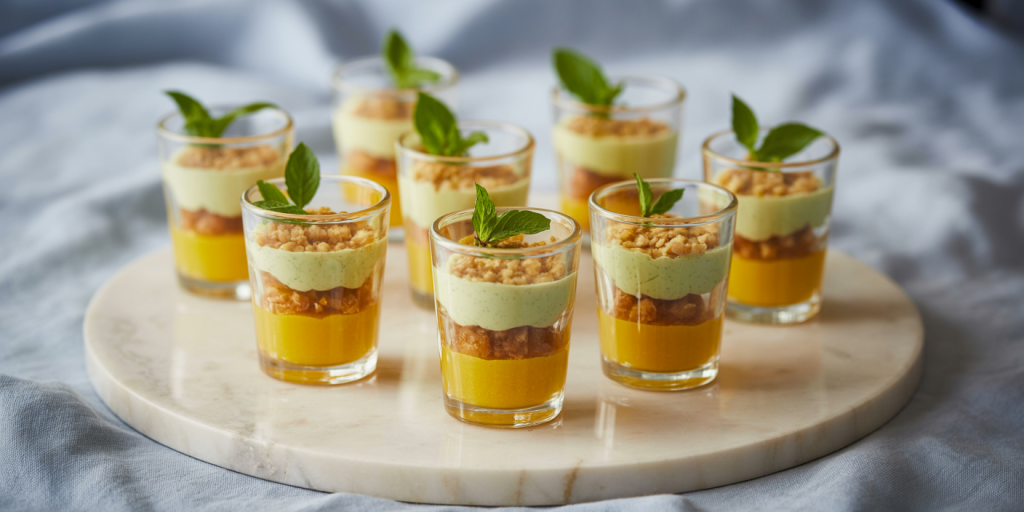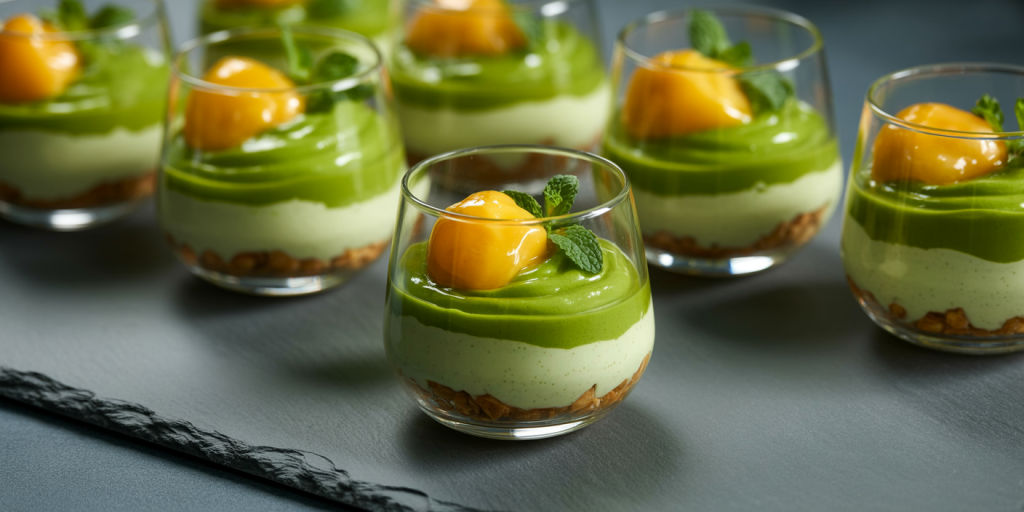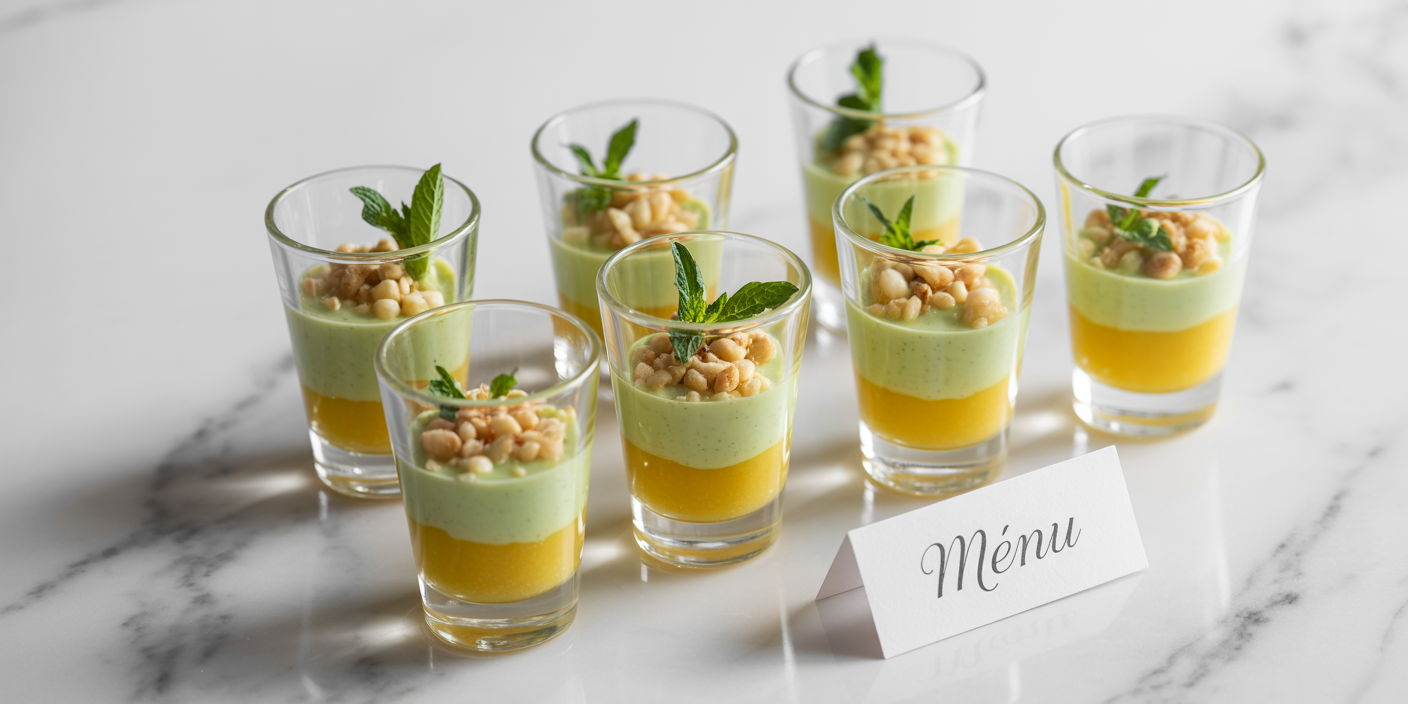Desserts presented in glass containers have surged in popularity, captivating the culinary world with their visually appealing layers and harmonious blend of textures and flavors. Among the most iconic forms of these desserts are trifles and verrines—each representing a distinctive approach to layered sweets served in glassware. This innovative presentation style appeals to both professional chefs and home cooks, combining practicality with elegance. Beyond aesthetic appeal, desserts in a glass allow precise portion control, efficient preparation, and the artful display of ingredients.
Recent culinary trends emphasize individual servings and Instagram-worthy plating, driving the global market for sophisticated dessert experiences. According to a 2023 report from Grand View Research, the global dessert market size was valued at $216 billion in 2022 and is expected to grow annually by 5.7% through 2030, with desserts in unique formats like trifles and verrines significantly contributing to this expansion. This article explores the origins, characteristics, and practical applications of trifles and verrines, discusses key differences, and presents trends shaping the future of desserts in a glass.
The Art and Origins of Trifles
Trifles hold a celebrated place in British culinary heritage and have long been recognized for their layered presentation. Traditionally, a trifle combines sponge cake or ladyfingers soaked in sherry or fruit juice, alternative custards or cream, assorted fruits, and jelly, all elegantly layered and served chilled in a large bowl or individual glass containers.
One famous example is the classic English summer trifle, which gained prominence in the 16th century and remains a staple in festive celebrations, particularly around Christmas and Easter. This dessert captures a harmonious combination of textures—from the spongy soaked cake to smooth custard and crunchy nuts or berries—which creates a memorable eating experience.
Practical application of trifles involves four or five essential components, each layered carefully to maximize color contrast and flavor synergy. For instance, the Devonshire trifle incorporates clotted cream and tart Devonshire cherries, providing regional flavor authenticity paired with visual depth. Chefs and enthusiasts often explore using non-traditional ingredients for experimentation, such as replacing sponge with brownies or infusing alcohol-free syrups to accommodate broader dietary preferences.
From a professional standpoint, trifles serve well in banquet-style catering, facilitating bulk preparation and serving through scalable layering techniques. Sensory analysis reveals that the interplay of moisture from soaked bases and rich creamy elements creates an optimal mouthfeel, a factor highlighted in a 2021 sensory study published in the *International Journal of Gastronomy and Food Science*.
Verrines: French Elegance in a Glass
Verrines, originating in France within the last few decades, are refined, miniature layered desserts meticulously crafted to emphasize balance and artistic finesse. Unlike trifles, verrines often involve smaller portions in shot glass-sized containers to highlight a more concentrated flavor profile and polished appearance.
The term “verrine” stems from the French word *verre* meaning glass, symbolizing the importance of the transparent vessel in showcasing distinct layers. These desserts typically include purées, mousses, crumbles, and gels arranged in vertical layers that emphasize textural contrast and fresh flavor combinations.
A notable example is the lemon and basil verrine, combining zesty lemon curd, fragrant basil mousse, and almond crumble, showcasing the marriage of herbal and citrus notes in a visually layered fashion. French pastry chefs excel in using verrines to present seasonal ingredients artistically paired with natural color gradations.

Additionally, verrines are widely used in fine dining and gastronomic events due to their size and visual appeal. A study conducted by the *World Pastry Forum* in 2022 indicated that 67% of pastry chefs cited verrines as a preferred format for dessert presentations at upscale restaurants because of their capacity to mix innovative ingredients and emphasize aesthetics without overwhelming diners.
Comparing Trifles and Verrines: A Practical Overview
Understanding the nuances that differentiate trifles from verrines is crucial for chefs and home cooks when deciding which dessert style to adopt.
| Aspect | Trifles | Verrines |
|---|---|---|
| Origin | British traditional dessert dating back to the 1500s | Modern French innovation from the 1990s |
| Portion Size | Usually large bowls or medium-sized individual glasses | Small, individual shot glasses or tiny tumblers |
| Ingredients | Sponge cake soaked in alcohol/juice, jelly, custard, fruit, cream | Mousses, purées, gels, crumbles, fresh herbs |
| Texture Profile | Soft, creamy, with juicy and spongy layers | Light, airy, crunchy, often with pureed or fresh elements |
| Presentation Style | Rustic, multi-layered with robust color contrast | Sophisticated, minimalist, emphasizing symmetry |
| Common Usage | Festive occasions, casual to semi-formal events | Fine dining, modern gastronomy, tasting menus |
| Preparation Method | Bulk preparation, simple layering in large vessels | Precision layering, attention to detail with pipettes |
This table highlights that while trifles are more traditional and generous in portion, verrines focus on refined taste and elegance. Both forms maximize glass presentation to visually entice consumers, yet their intended uses and sensory experiences differ markedly.

Practical Tips for Crafting Desserts in a Glass
Making successful desserts in a glass requires attention to technique, ingredient compatibility, and presentation finesse.
Firstly, the choice of glassware can significantly impact the final product. Cylindrical glasses or stemmed dessert cups often work well for trifles, providing a spacious canvas for layering. Conversely, verrines benefit from small, clear shot glasses or square-shaped verrine cups, which allow precision and easy handling.
Secondly, layering order affects both flavor release and visual appeal. Denser base components, such as cake or crumble, usually come first, followed by creamy elements, and topped off with fresh fruits or garnish. For example, in a raspberry and chocolate trifle, starting with chocolate cake soaked in liqueur, then layering with raspberry mousse, and finishing with fresh raspberries and mint leaves optimizes texture progression.
Lastly, temperature management is paramount. Both desserts taste best chilled but should be taken out of refrigeration for a few minutes before serving to prevent overly firm textures. A recent survey by *Food & Wine Magazine* (2023) revealed that 82% of enthusiasts prefer their glass desserts slightly softened, enhancing the creaminess and flavor diffusion.
Cultural Adaptations and Modern Innovations
The global appeal of desserts in a glass has inspired diverse adaptations merging traditional recipes with local ingredients and innovative techniques.
In the United States, layered parfaits echo trifles, combining Greek yogurt, granola, and seasonal berries, emphasizing health-conscious tendencies alongside indulgence. This variant creates a lighter alternative with probiotics and fiber, attracting fitness-minded consumers while preserving visual charm.
In Japan, chefs have embraced verrines by infusing elements like matcha mousses, azuki bean paste, and yuzu gel layers, harmonizing native flavors in an elegant glass format. Such regional customization highlights the versatility of layered desserts as a medium for culinary storytelling.
Moreover, plant-based and allergen-free desserts in glassware are increasingly prevalent. Vegan trifles utilize coconut cream and gluten-free sponge, while nut-free verrines incorporate oat crumbles and soy mousses, expanding accessibility without sacrificing sophistication. Market research from *Allergen-Free Living* (2023) indicates a 35% annual rise in demand for such desserts in specialty restaurants.
Future Perspectives: The Evolution of Desserts in a Glass
The trajectory of desserts in a glass seems poised for exciting developments driven by technological advances, consumer preferences, and sustainability concerns.
Emerging trends include integrating molecular gastronomy techniques, such as edible foams, spherification, and unexpected flavor pairings within verrines, pushing the envelope of taste and texture. For instance, a dessert combining passion fruit spheres with coconut panna cotta layered in a verrine can create a surprising burst of freshness and artistry.

Sustainability also guides the future. Reusable glass containers designed for easy cleaning or biodegradable options made from glass composites may become standard as eco-conscious consumers demand reduced waste. Additionally, local sourcing of fresh, seasonal ingredients for layering will align with the farm-to-table movement—fostering community engagement and reducing carbon footprint.
Technology plays a role too; smart kitchen appliances with precision dispensing could assist chefs and home cooks in creating perfectly measured layers with minimal effort. This may democratize dessert artistry through user-friendly devices, bridging professional and amateur culinary worlds.
Finally, the evolving digital landscape, particularly social media platforms like Instagram and TikTok, continually fuels creative presentations and recipe sharing, ensuring desserts in a glass will remain an ever-popular and dynamic category within international gastronomy.
—
In summary, trifles and verrines exemplify the art of desserts in a glass, each offering unique sensory and visual experiences rooted in cultural traditions and modern innovation. Whether preparing a hearty British trifle for a family gathering or a delicate French verrine for a sophisticated menu, understanding their characteristics, preparation techniques, and market trends enables culinary professionals and enthusiasts alike to craft memorable desserts that captivate both the eye and palate. With continuous innovation and growing consumer interest, desserts in a glass are set to remain a centerpiece of creative dessert presentation in the coming years.

Deixe um comentário